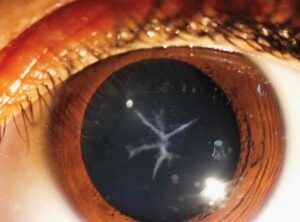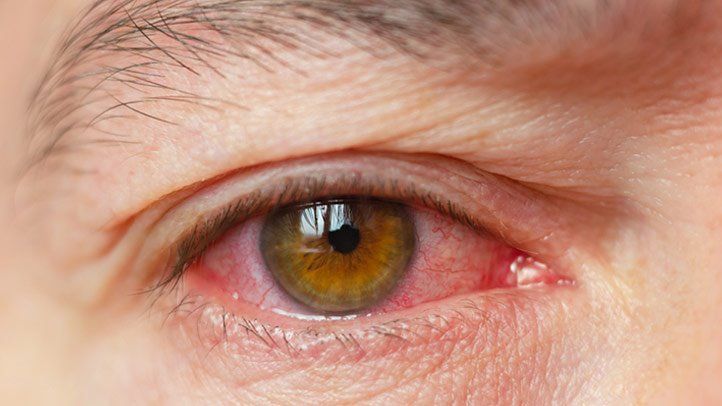Sutural cataracts are a relatively rare type of cataract that occurs in the sutures, or seams, that connect the lens and cornea of the eye. They can cause a variety of symptoms, including blurred vision, sensitivity to light, and changes in color perception. Sutural cataracts are usually treated with surgery, but there are a few natural remedies that can help slow their progression. In this blog post, we will discuss the causes, symptoms, and treatment options for sutural cataracts.
Contents
What Is Sutural Cataract?
 A sutural cataract is a type of lens opacity that develops in the area between two sections, or sutures, of the lens capsule. It is usually found in children and young adults. The cause of sutural cataracts is unknown but may be associated with trauma to the eye or an inherited condition. This condition is usually treated with surgery.
A sutural cataract is a type of lens opacity that develops in the area between two sections, or sutures, of the lens capsule. It is usually found in children and young adults. The cause of sutural cataracts is unknown but may be associated with trauma to the eye or an inherited condition. This condition is usually treated with surgery.
Many of those affected by a sutural cataract may not notice any visual changes. However, they may experience decreased vision in the affected eye since the light is unable to pass through the lens properly. It is estimated that one in three people with a sutural cataract will experience symptoms.
How Is It Different From Other Cataracts?
As there are numerous types of cataracts, it is important to understand the differences between them. Sutural cataracts are smaller and less dense than other types of cataracts. They form directly on the suture lines of the lens, which are the points where different parts of the lens join together.
This type of cataract has a tendency to affect both eyes, though not necessarily at the same rate. It is also more common in individuals over the age of 60 and can progress faster than other forms of cataracts.
In fact, the lens of the eye, which is made up of protein and water, can become denser over time. This process, known as nuclear sclerosis, increases the risk of developing sutural cataracts because it puts more pressure on the suture lines.
What Are The Symptoms Of Sutural Cataracts?
It is not easy to recognize the presence of sutural cataracts. However, a few common signs might include:
- Blurriness in vision: A person with a sutural cataract may experience a decrease in the sharpness of their vision. This is due to the obstruction of light entering the eye, obscuring clear vision.
- Halos around lights: When looking out at bright lights, you may notice a halo of light around the edges of the object. This is caused by the light rays being scattered due to the presence of a sutural cataract.
- Sensitivity to light: As with any other type of cataract, people with sutural cataracts may experience an increase in sensitivity to bright lights. This can cause difficulty when driving at night, as well as general discomfort.
- Double vision: As the cataract continues to grow and obstruct vision, it can cause double images. This symptom is generally associated with more advanced sutural cataracts.
These symptoms are not exclusive to sutural cataracts and may be experienced with other types of cataracts as well. It is important to speak with a doctor if you are concerned about your vision.
What Are The Causes And Risk Factors?
 There are several potential causes and risk factors for this type of cataract. Some of these are:
There are several potential causes and risk factors for this type of cataract. Some of these are:
- Age: As with any type of cataract, age is a common factor. People over the age of 65 are especially prone to developing sutural cataracts.
- Genetics: Some types of genetic conditions can increase your risk of forming sutural cataracts. This includes having Down syndrome as well as certain types of dwarfism.
- Trauma: In some cases, a traumatic injury to the eye can cause sutural cataracts. This could include a physical blow to the eye or even an infection.
- Diabetes and other medical conditions: People who are diabetic are more likely to develop various forms of cataracts, including sutural cataracts. Other medical conditions such as certain autoimmune diseases or nutritional deficiencies can also increase your risk.
- Medication side effects: Certain medications, such as steroids, have been linked to an increased risk of developing this type of cataract.
Sometimes, it is not possible to identify the cause of a sutural cataract. The reason might be unknown or simply untraceable. So, it is important to get a consultation with a professional eye care provider to have your eyes checked and determine the underlying cause.
How Is It Diagnosed?
The diagnosis is usually made during a comprehensive eye examination and includes the use of slit-lamp examinations. The doctor will look for any signs of lens opacity or haze in the sutures, as well as looking for any other type of cataract.
In some cases, an imaging test such as ultrasound may be used to detect the early stages of sutural cataracts. This test can help the doctor determine if there are any changes in the shape of the lens and if it is affecting vision.
Generally, the diagnosis can be confirmed after an eye exam. And the tests are non-invasive. If you are having any of the above-mentioned symptoms, seek medical advice from an eye specialist.
What Are The Treatments Options?
Surgical treatment is often recommended for sutural cataracts if there are vision issues that cannot be managed with eyeglasses or other lenses. Surgery involves replacing the clouded lens material with a clear lens implant. As with any type of eye surgery, there are risks associated with the procedure. These include infection, bleeding, and a higher risk of retinal detachment.
In some cases, medications may be prescribed to slow or stop the progression of the cataract. Topical eye drops containing steroids can help reduce inflammation in certain types of cataracts. Other medications, such as antiglaucoma eye drops, may be used to control symptoms of glaucoma that may be caused by the cataract.
Lifestyle changes can also help manage cataract symptoms. Eating a nutrient-rich diet, wearing protective eyewear when outdoors, or using bright lights when reading may all help reduce vision problems caused by sutural cataracts.
If a person experiences any vision changes or symptoms associated with sutural cataracts, they should seek medical attention right away to prevent further damage to their vision. Early diagnosis and treatment can help preserve vision and avoid the need for surgery. An ophthalmologist can diagnose and recommend treatments that are best suited to the individual patient.
Conclusion
To conclude, sutural cataract is often a harmless yet visually disruptive condition. It is usually caused by genetic inheritance or age-related degeneration in the lens fibers. This is often accompanied by vision impairment, light sensitivity, and blurred or double vision. Although it is not life-threatening, sutural cataracts can have a negative effect on one’s quality of life.
Fortunately, the condition can be treated with various options available. Just be sure to consult a qualified eye care professional to determine the best treatment plan for you.
Cataract surgery is a safe and painless procedure. At MantraCare we have a team of experienced eye surgeons, who will be happy to answer any questions on cataract surgery. Call us at +91-9711116605 for any inquiries.
